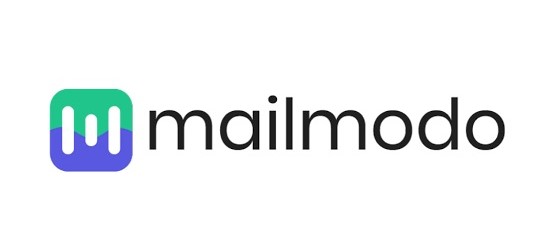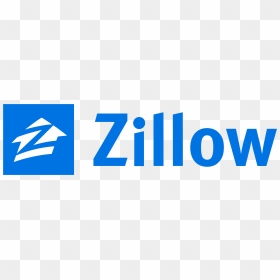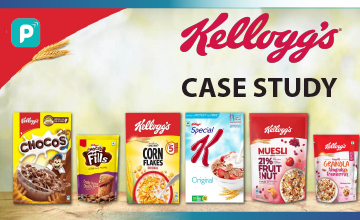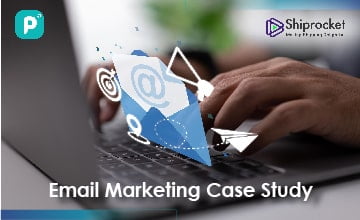In the world of digital marketing, email marketing stands out as a super effective tool, whether you’re selling to other businesses (B2B) or directly to consumers (B2C). When you consider various email marketing case studies, you will find that diligent and intelligent efforts in this area never go to waste.
Sure, there are other ways to get people interested in your business, but email has some awesome benefits that really stand out, especially when you compare it to social media and search engines. They say that for every dollar you invest in email marketing, you can expect a whopping $39.40 in return. That’s a pretty amazing return on investment!
But here’s the thing: just sending emails here and there isn’t enough. You’ve got to make sure that people are actually opening and reading your emails. If they’re not opening them, your goals won’t be met. So, it’s super important to focus on getting the best possible email open rate.
In the competitive digital world, mastering email marketing is like having a superpower. It’s not just about sending messages; it’s about making sure people open them, pay attention, and connect with your business. As you navigate the digital landscape, making your emails stand out and ensuring people open them is key to long-term success and building strong connections with your audience.
Let’s explore a few email marketing case studies that had some tough challenges. They used email marketing in a smart way to not only deal with these challenges but also find great success.
HubSpot – Personalization Powerhouse

Company Background:
Founded in 2006, HubSpot stands as a prominent platform for inbound marketing and sales solutions. Catering to a diverse user base, HubSpot faced the challenge of delivering personalized content to a broad audience.
Challenge:
The challenge for HubSpot was to connect with users on an individual level in a landscape flooded with generic emails. How could they make their communications more relevant and engaging for each unique subscriber?
Overcoming with Email Marketing:
HubSpot tackled this challenge head-on by leveraging the power of personalization in email marketing. Using sophisticated data analytics, they delved into user behaviour, preferences, and interactions. Armed with this information, HubSpot crafted highly tailored email campaigns, recommending personalized content, providing targeted product suggestions, and offering exclusive discounts based on users’ past engagements.
For instance, if a user frequently engaged with blog posts on a specific topic, HubSpot would send curated emails featuring related content. This strategy significantly boosted user engagement, as recipients felt that the content was specifically tailored to their needs and preferences.
HubSpot implemented dynamic content in emails, allowing them to display different content to different segments of their audience. This level of personalization not only enhanced the user experience but also contributed to increased conversion rates and customer loyalty.
Amazon’s Retail E-commerce Marketing

Background:
Amazon, founded in 1994, initially started as an online bookstore and has evolved into one of the world’s most influential e-commerce and cloud-computing giants. As an e-commerce behemoth, Amazon faced the substantial challenge of helping users navigate and discover relevant products within the immense array of options available on its platform.
The Challenge:
The challenge for Amazon was twofold. First, users could easily feel overwhelmed by the sheer volume of products available, leading to decision fatigue and potentially reducing the likelihood of a purchase. Second, with such an extensive inventory, there was a risk that users might not find products that genuinely aligned with their preferences and needs.
Overcoming the Challenge:
Amazon ingeniously tackled this challenge by leveraging the power of recommendations through email marketing. Recognizing the value of data-driven insights, Amazon implemented sophisticated algorithms to analyze each customer’s browsing history, past purchases, and overall engagement on the platform.
Using this wealth of data, Amazon crafted targeted and personalized email campaigns. These emails were designed to suggest products tailored specifically to each customer’s interests, preferences, and purchase history. For example, if a customer frequently browsed or purchased electronics, they might receive emails featuring the latest gadgets, accessories, or related items.
By delivering content that resonated with individual customers, Amazon significantly increased the likelihood of them discovering and purchasing products aligned with their interests.
Mailmodo’s Pain Point Resolution

Mailmodo, a marketing platform, provides email marketing case studies of how their clients have successfully resolved pain points and discovered new growth avenues through email marketing. Their email marketing case studies highlight the power of personalization, automation, and segmentation in driving engagement and conversions.
By tailoring email content to specific audience segments, businesses have been able to deliver highly relevant messages that resonate with their subscribers. This approach has led to increased open rates, click-through rates, and ultimately, higher conversions.
Mailmodo’s case studies exemplify the impact of leveraging email marketing tools to address customer pain points and drive business growth.
How did Zillow do it?

Background:
Zillow, a prominent real estate and rental marketplace, is dedicated to providing consumers with valuable data. With an extensive database of property listings and user information, Zillow faced the challenge of effectively presenting this data in an engaging and actionable way.
Challenge:
Zillow needed to overcome the challenge of delivering relevant information to its users, ensuring that it was both useful and compelling enough to drive them to take action. With such a vast amount of data available, finding a personalized approach to engage users was crucial.
Solution:
Zillow leveraged its user data to send personalized, data-driven emails to its audience. These emails included tailored home recommendations and market trends based on each user’s search history and preferences. By utilizing the power of personalization and data-driven insights, Zillow aimed to deliver content that resonated with its users and encouraged them to take action.
Results:
The implementation of personalized, data-driven emails yielded remarkable results for Zillow. Users responded positively, with a significant increase in engagement observed. More users clicked through the emails to view properties and utilized various services offered by Zillow. This heightened engagement demonstrated the effectiveness of using data to drive email marketing campaigns. By delivering timely and relevant content, Zillow successfully captured the attention of its audience and motivated them to take further action on its platform.
Dollar Shave Club: Humor and Personality for Retention

Background:
Dollar Shave Club, founded in 2011, disrupted the shaving industry with its subscription-based model that delivers razors and grooming products to customers’ doors.
The Challenge:
In a competitive market, differentiating the brand and retaining customers were significant challenges. Dollar Shave Club needed a strategy that went beyond the transactional nature of their business.
Overcoming the Challenge:
Dollar Shave Club infused humor and personality into its email campaigns. From witty subject lines to entertaining content, the brand made every email a delightful experience for subscribers. This approach not only distinguished the brand from competitors but also fostered a sense of community among its subscribers, contributing to higher customer retention rates.
Takeaway:
Don’t be afraid to inject personality and humour into your email campaigns. It can make your brand more relatable and memorable, fostering a stronger connection with your audience.
Starbucks: A Brew of Personalization and Customer Loyalty

Background:
Starbucks, a global coffee giant, had the challenge of keeping its customers engaged and loyal in an extremely competitive market.
Challenge:
With a vast customer base, Starbucks needed to ensure that its marketing efforts were personal and engaging to each customer. They had to ensure their promotions were reaching the right people at the right time.
Solution:
Starbucks leveraged email marketing to send personalized offers based on customers’ purchase history and preferences. They used data from their loyalty program to segment their customers and deliver highly targeted emails. For instance, a customer who frequently purchases a particular drink would receive promotions related to that drink.
Results:
Starbucks’ personalized email marketing efforts resulted in increased customer loyalty and higher sales. Customers appreciated the personalized touch, which made them feel valued and understood. This case study showcases the power of personalization in email marketing.
Grammarly: Nurturing Leads with Educational Content

Background:
Grammarly, launched in 2009, is a writing assistant tool that helps users improve their writing skills and enhance the clarity of their communication.
The Challenge:
With a user base spanning a wide range of writing abilities, Grammarly faced the challenge of catering to diverse needs. Lead conversions into loyal customers requires a strategic approach.
Overcoming the Challenge:
Grammarly used email marketing for lead nurturing. Their emails included valuable tips on improving writing skills, insights into premium features, and success stories from users who benefited from the tool. By providing educational content, Grammarly not only kept users engaged but also positioned itself as an indispensable tool for anyone looking to enhance their writing.
Conclusion
These email marketing case studies collectively emphasize that email marketing is not merely a communication tool; it’s a dynamic force that can drive engagement, build trust, and foster meaningful connections with an audience. The common thread among these achievements is the strategic utilization of data, personalization, transparency, and education to create impactful and resonant email campaigns.
Know about the latest email marketing trends in today’s digital world. Visit our website and work on the strategies that drive results!
All images belong to their respective owners. Please email [email protected] if removal is required.




